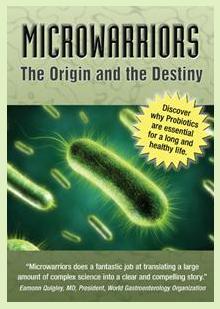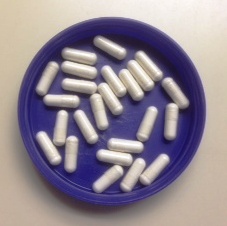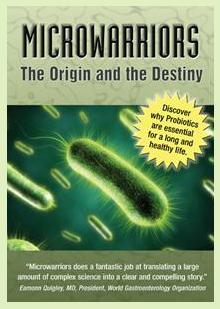| Back to Back Issues Page |
 |
|
Which Calcium Source is the Best One? October 14, 2013 |
How Do You Get the Calcium You Need?Volume 1, Issue 7: October, 2013 Hello from PowerOfProbiotics.com! Thanks for joining me on this journey of health transformation! Based on feedback, this month's newsletter is a transition newsletter, going from the longer versions of the past to a more-shortened one in the future. You can let me know what you think by replying to this email. In this issue…
Which Calcium Source is the Best One?
Last month the newsletter topic was about the dangers of taking too much supplemental calcium. But what if you feel better taking a supplement to bridge the gap between what you get from foods and drinks and what you might need? What should you do then? First of all, recognize that calcium is only one of many nutrients that make up healthy bones and teeth. Focusing your efforts only on calcium will not solve your bone problems. Additionally calcium intake requirements vary based on many factors. So you could be getting too much, or not enough, and not even realize it. Since bone health is a huge topic by itself, for now I’ve presented some quick take-home points about some of the most common calcium supplements. Firstly, the form of calcium you take has an effect on how your body uses it. What is important here is the amount of elemental calcium. For example, calcium carbonate (Tums, coral calcium, etc.) is typically 40% elemental calcium, whereas calcium citrate (Citracal, etc.) is about 21% elemental calcium, calcium lactate is about 13% and calcium gluconate is about 9%. Read the nutrition facts and compare supplements Do not just rely on the front of a supplement label that says, “Calcium, 500 mg” You could be getting anywhere from 200 mg elemental calcium to less than 45 mg. Do NOT take calcium carbonate. Yes, it is inexpensive, but it is usually sourced from rocks and shells, and can contain heavy metal contaminants like lead and mercury. Additionally, it is used as an antacid which negates the helpful and beneficial stomach acid your body produces. Although calcium carbonate is higher in elemental calcium than some of the other forms, the low absorption rate and the neutralization of stomach acid make it one of the least desirable forms. Also, do NOT take dolomite, oyster shells or regular bone meal supplements due to proven concerns of heavy metal contamination and low absorption rates. Calcium citrate is calcium bound to a citric acid molecule. Most manufacturing processes start with lime (a rock) and react it with citric acid to precipitate out calcium citrate. Calcium citrate is not affected by stomach acid levels, and it is usually inexpensive. Absorption is better than calcium carbonate, but again, it is only one of many nutrients required for bone health. Calcium lactate and gluconate (as well as other such as aspartate, citric malate, glycinate) are calcium molecules bound to amino acids which help your body recognize them and absorb them better. The downside is that their elemental calcium levels are low per capsule, so many capsules are needed to meet a certain dosage. The form of calcium you take is only one of many factors that affect how your body uses it. Other factors which affect your calcium needs are the absorption rate, when you take the supplement, what you take the supplement with, the amount you have taken at one time, the integrity and health of your digestive tract and the level of SCFA’s (short-chain fatty acids) from probiotic bacteria in your gut. What’s my recommendation then? If you take calcium supplements and eat calcium-containing and calcium-fortified foods, you may be getting more calcium than you realize and exceeding what your body needs. Exceeding your needs can cause or is linked to:
My general recommendation is to get calcium and other nutrients you need from food and drink sources that your body recognizes as nourishment, and to eat and drink cultured and/or probiotic foods and beverages to keep your digestive tract as healthy as possible for maximum nutrient absorption. In case you missed last month’s issue, here’s a recap of some of the best food sources of calcium, besides dairy and calcium-fortified foodstuffs, and many of which are superior to them:
Remember that eating a whole-foods diet can get you the calcium you need. And since calcium is only one of many, many nutrients your body needs, whole foods can supply your body with a wide range of nutrients that your body can use. Also remember that if you do take calcium supplements, studies show that you can’t absorb more than 300-500 mg of calcium at a time, so taking a mega-dose in one sitting isn’t going to do your body much good and has the potential to have undesirable side effects.
In case you missed them: New pages on the websiteAcne is an imbalance from the inside out, so are antibiotic creams and pills the best choice?Acne and probiotics may seem totally unrelated, but here's why they may make a perfect pairing for your gut health and breakouts.
Upcoming Topics and PagesI'm prioritizing topics to be added to the website.Do YOU have a suggestion for a topic?
Ideas and Products to Enhance Your Life
Reed's Kombucha is a tasty fermented drink that may help your transition off sodas to more healthy choices. It comes in 8 flavors. To me, however, the two varieties that I tried, the Hibiscus-Ginger-Grapefruit and the Lemon-Ginger-Raspberry, were too sweet for kombucha for me. Although they had about 5 grams of sugar per serving, the sweetness was more than I expected. Also, the cultures used were not disclosed so I had no idea of what I was getting. Don't take my word for it, though. If other kombuchas have been too sour or too "zippy" for you, Reed's may be the brand that works for you.  "Microwarriors 2: The Origin and the Destiny" movie is delayed in its release.
"Microwarriors 2: The Origin and the Destiny" movie is delayed in its release. This Leonard Nimoy-narrated film is the second of three releases that combines cutting-edge medical information, interviews with experts, and understandable animations of how probiotics work in a format that is not only informative, but entertaining as well. When I know of more details, I'll let you know. You can watch video clips from the first movie, "Microwarriors: The Power of Probiotics" here. (Note that I have no involvement in the production or release of these movies. I'm excited because the DVD's can help explain concepts about probiotics in movies that I try to explain in words.) You can purchase the first edition here.
Comments? Questions? Ideas?I’d love to know what you think. If you found the information helpful, or have comments or questions about it, or ideas you’d like to see addressed, please leave me a message, either by replying to this e-zine, or commenting on one of the webpage links at the beginning of this newsletter, or at Contact Us. Also, feel free to forward this to anyone you think would benefit from it.If you were forwarded this ezine, and you like what you read, you can subscribe to it yourself at Power of Probiotics. To your best health, -Jo |
| Back to Back Issues Page |

